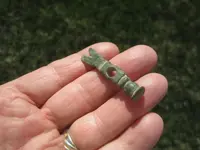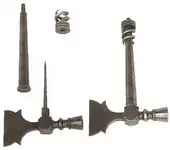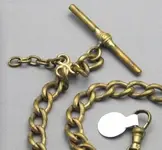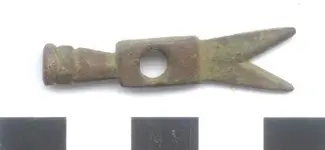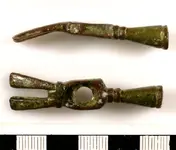Bill D. (VA)
Silver Member
- Joined
- Oct 7, 2008
- Messages
- 4,711
- Reaction score
- 6,212
- Golden Thread
- 6
- Location
- SE Virginia
- 🥇 Banner finds
- 6
- 🏆 Honorable Mentions:
- 2
- Detector(s) used
- F75 SE (land); CZ-21 (saltwater)
- Primary Interest:
- Other
Found this interesting little piece the other day at a new colonial site I was hunting. I think I've seen these before but can't recall what it is. Some suggested a pipe tamper but it's quite short and not sure what the hole is for. Any ideas??
Attachments
Last edited:



